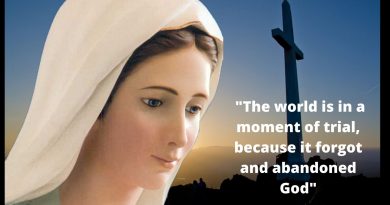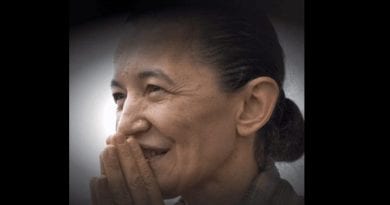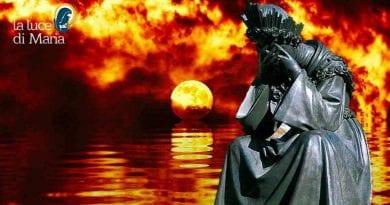Mirjana: “Yes, Our Lady has a sad smile.” Carmelo Puzzolo creates famous painting from input from the visionaries.
This article comes from “Papaboys” Please excuse the imperfect translation. We would love volunteers to help 🙂 Thank you all for understanding
An artistic production, that of the artist Carmelo Puzzolo inspired directly by the Queen of Peace.
With his works, Carmelo Puzzolo is the artist most present in the parish of Medjugorje.
His works are found in the main places of prayer: the bronze relief “The Birth of Jesus” between the church and the parish office, the statue of St. Leopold Bogdan Mandic next to the external confessionals, the Stations of the Cross on the Krizevac, the mysteries of the Rosary on the Apparition Hill, the statue of Fra Slavko Barbarie in the “Mother’s Village”. Last but not least, the image of the Queen of Peace in the “Blessed John Paul II” Salon,
Carmelo Puzzolo says: “I heard about Medjugorje for the first time on Italian television. It was just a brief news. I was not focused on what was being shown on television, I was not following that program. I only saw the seers in ecstasy out of the corner of my eye.

In 1985 I was in Padua, in the church of Sant’Antonio, with the great Italian artist Pietro Manigoni and I was listening to a conversation about Medjugorje of my industrial friends. They told me: “Carmel, go to Medjugorje, there is something very interesting”.
As soon as I was free of commitments, in July 1985, I went to Medjugorje. Once I arrived, I was very impressed with the way people prayed there. In those days, the apparitions were in the room in front of the parish office. Among the Franciscans I saw around the parish office and around the church, I noticed a very lively one: it was between Slavko Barbaric.
It was the first meeting, followed by others, in which he persuaded me to accept to make the bronzes of the Via Crucis. But this is another story!
For the picture of Our Lady, Fr. Slavko called me in 1989 and told me that the friars wanted me to paint the Madonna as the seers see it and went on to explain that people saw the Madonna of Medjugorje in what was, in reality, the statue of Tihaljina. I told him that it was not so easy to portray Our Lady of Medjugorje, after which he sent me a fax with the answers of the visionaries in which they described Our Lady.
The paper with questions to the visionaries and their answers was a meter and a half long. It was ten questions about what the Madonna really looked like, to which the visionaries had answered. All those answers were not enough for me because, for example, the “beautiful” answer, what does it mean for a painter? I have prepared a large canvas and I have worked on that work with all my heart, trying to imagine the beauty that the visionaries described.

Sometimes I had to work for days and days just to draw a little detail. So I wrote a letter to Fr. Slavko telling him that he had asked me to paint that image, but, in reality, he wanted me to convert, because only mystics can paint Our Lady, and I am not. While working on the image, I heard that the visionary Mirjana had come to visit a friend in Italy.
I asked the gentleman to ask if I could go with what I was
It ‘very difficult to represent a smile: the smile is not a grimace of the lips, but it is something that comes out of the whole being. That is a smile that comes from the great love of Our Lady, but it is also a bit sad because she sees that men do not convert as much as they should. How is it possible to transfer this to canvas? You can try, but you can never fully succeed.
When I finished it, Vicka also saw her and she too was satisfied. When someone made an observation on the cloud on which the Madonna stands, Vicka said that she saw the Madonna just like that. At the bottom of the image I also painted the church of Medjugorje.
Source: extract from the article appeared in “La voce della Pace”




